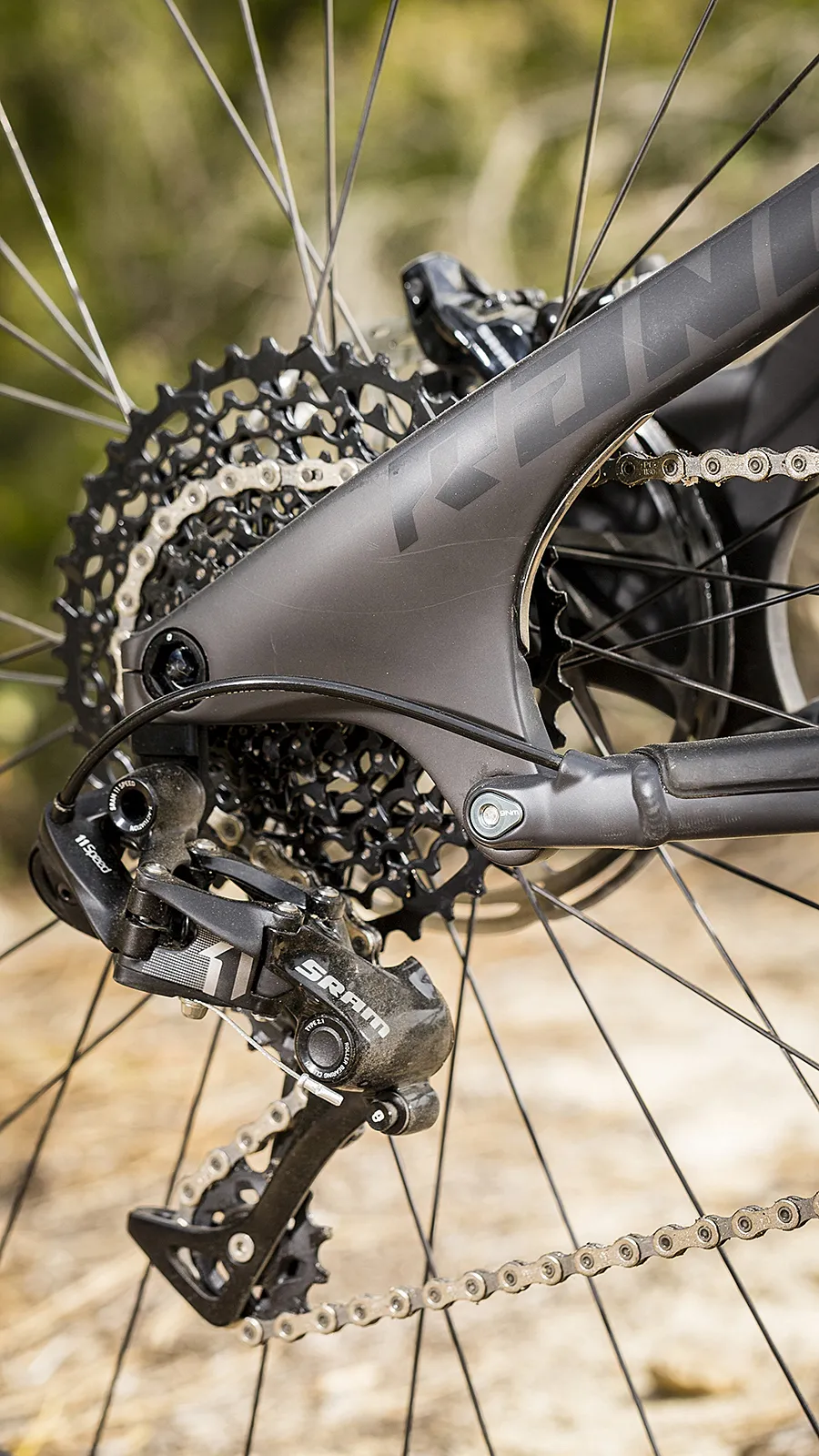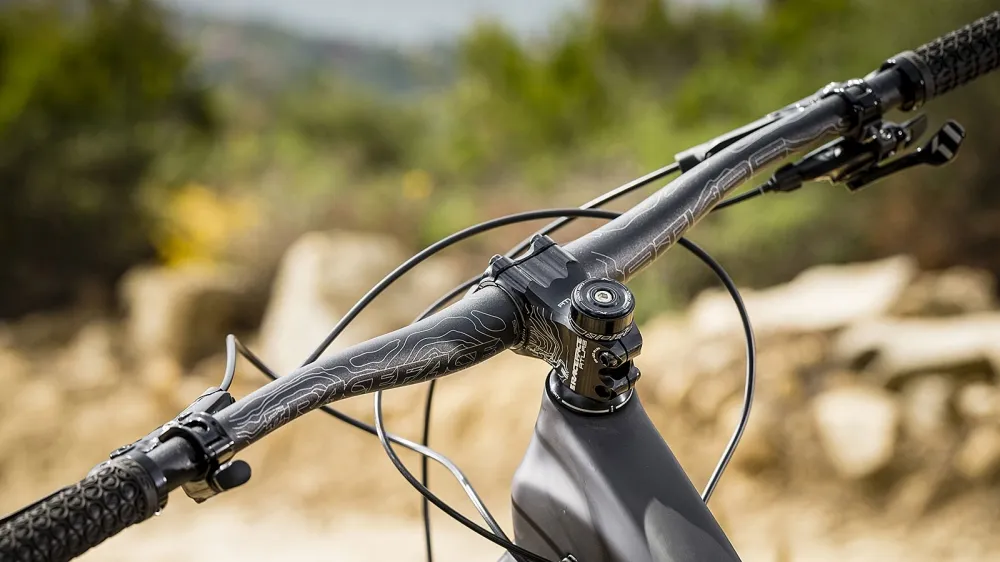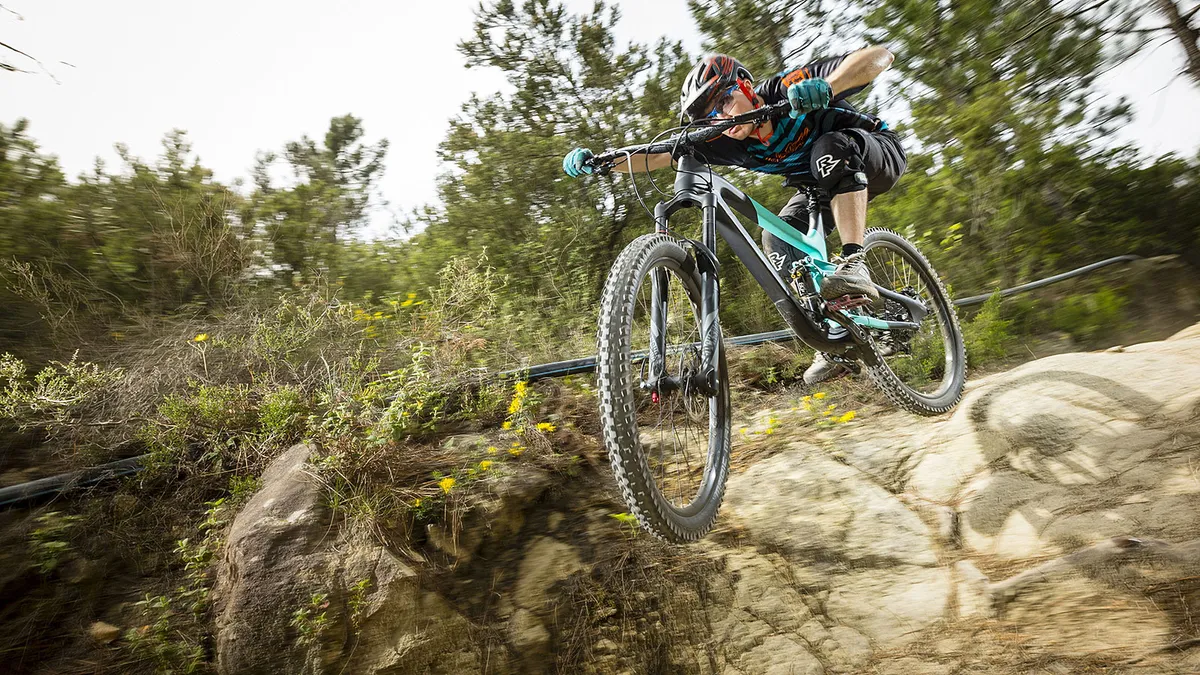With its carbon frame and impressively high-value kit, it looks like the Range should be a surefire winner, but a relatively short cockpit and sluggish and sticky feeling Cane Creek shock really mask the potential of what could be a great bike.
Wide ranging
Seeing as Norco is based in the big mountains of British Columbia, it’s no surprise that the Range is designed to hit the roughest descents yet still be able to propel itself up the climbs. That means the carbon frame is reassuringly chunky, with a simple shape and slightly squared-off tubing.
It’s not quite full-carbon, however. The rocker link and chainstays are alloy, the latter because Norco actually increases chainstay length as you move up in frame size to keep the rider’s weight distribution even, not matter how lofty you are.
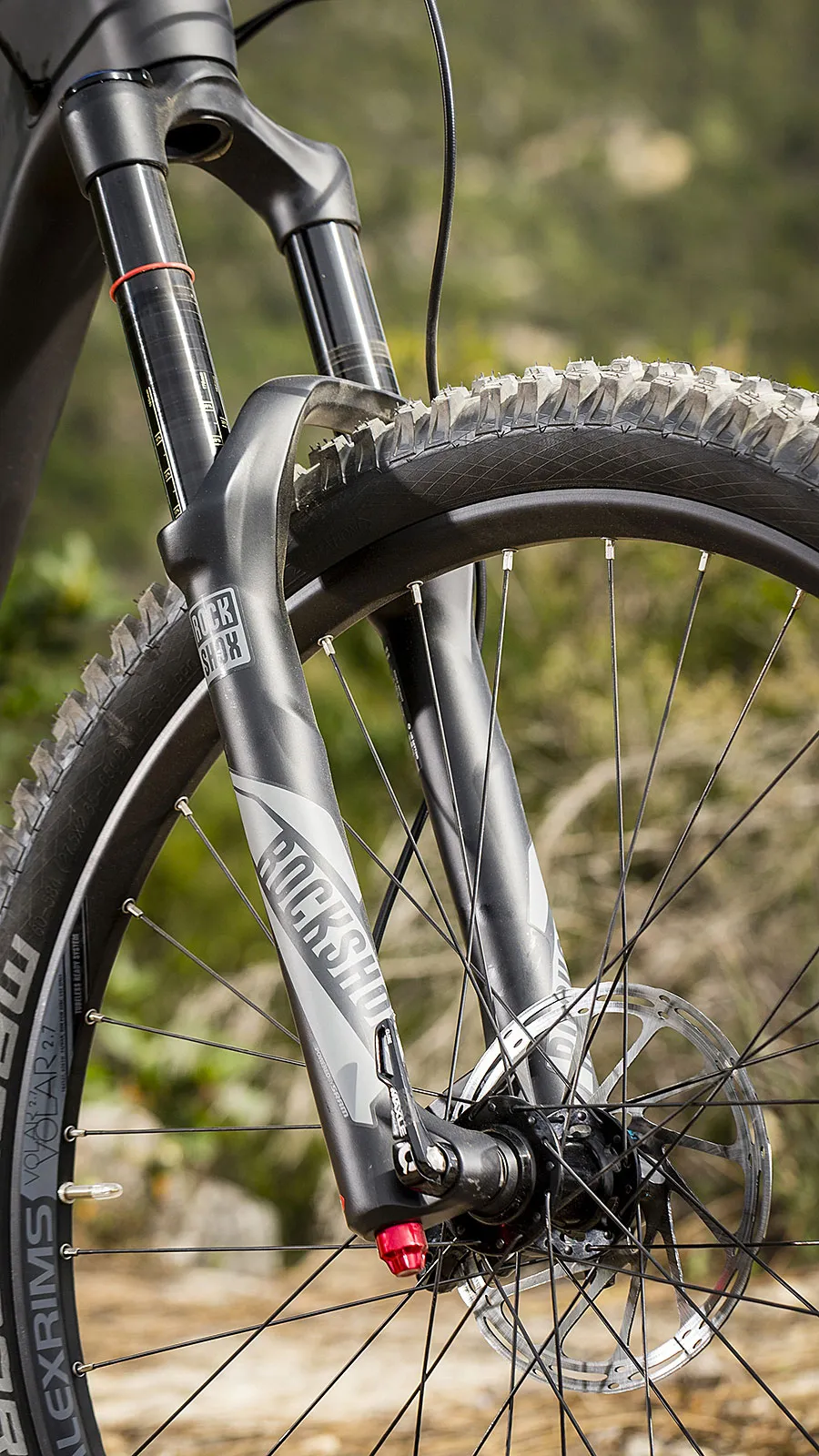
The 170mm RockShox Lyrik is solid and controlled
There’s also internal cable routing and, while looks are a personal thing, I was quite taken with the turquoise colour scheme.
The Range offers up 160mm of travel from the Horst-link style four-bar rear end and it feels nicely progressive, delivering good support despite staying nice and active under braking. The Cane Creek Double Barrel Air shock was a bit of a letdown, however.
While it offers more tweaking potential than you can shake a selection of Allen keys at, with both high and low speed adjustable compression and rebound damping, it’s noticeably more sticky-feeling than offerings from Fox or RockShox. That means that it takes a fair hit to get the shock moving and even playing with the settings it proved extremely hard to impart to lively feeling to the rear suspension.
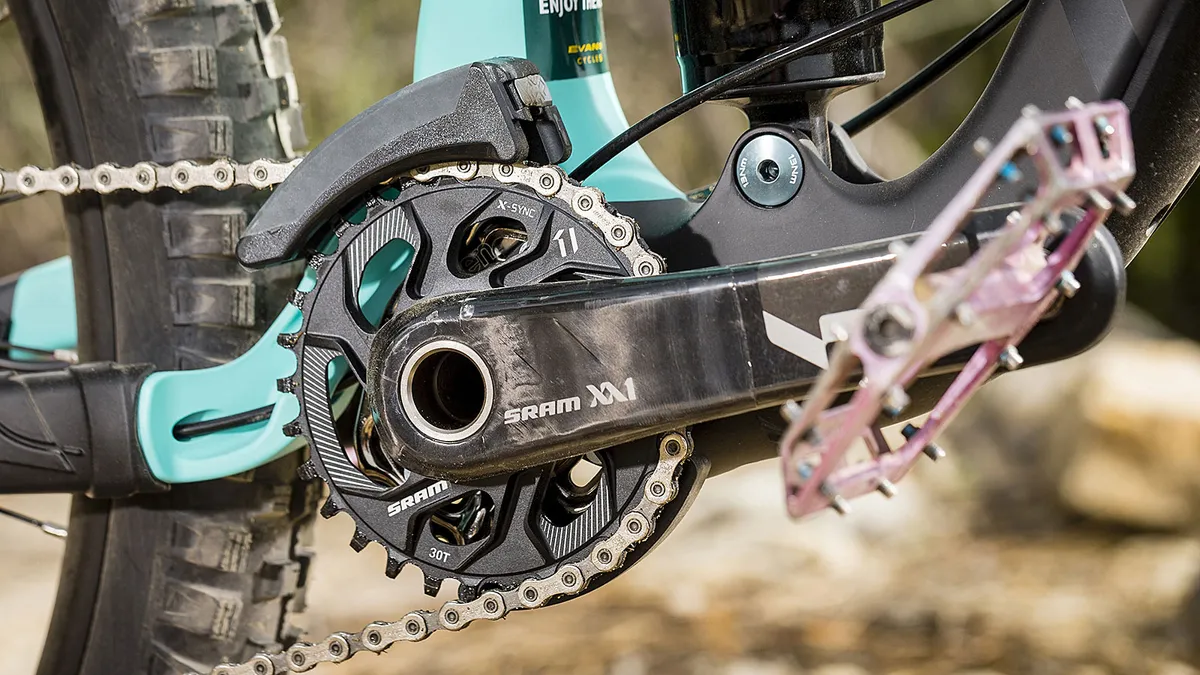
The XX1 carbon crankset with direct-mount 30t ring is a nice upgrade
That’s a real shame, as you can feel that underneath the soporific shock the basic suspension and shape of the Range is playful and confidence inspiring. While I wouldn’t have minded a little bit more reach than the 433mm of the size Large frame for really high speed riding, it does mean that in the twisty bits it’s a very flickable beast. The slack 65.6-degree head angle helps keep things calm when things get steep and there was never any hint of the bike wanting to tuck under, even pushing hard through tight switchbacks.
That poise is helped by the fact that the 170mm travel RockShox Lyrik fork feels noticeably more solid and accurate than a Pike and the longer negative air spring gives a much more supple feeling beginning stroke. Despite being equipped with the basic compression and rebound adjustable RC damper, we didn’t miss the extra dials of higher end forks and no matter how hard we pushed, the Lyrik delivered gobs of traction and support.
Our only mild gripe is that while the fork dropout is ready for the larger diameter Torque Cap hub interface, the front hub isn’t, which makes it a faff to get it located correctly.
Mismatched rubber
Grumbling aside, the wheelset is a solid performer, with the 27mm wide Alex Volar rims giving a great shape to the Schwalbe Magic Mary tyres that are fitted front and rear. They’ve got a tread pattern that works really well in almost all conditions and Norco has tried to keep the weight down while providing a thick casing Super Gravity model at the rear and a lighter Snake Skin up front.
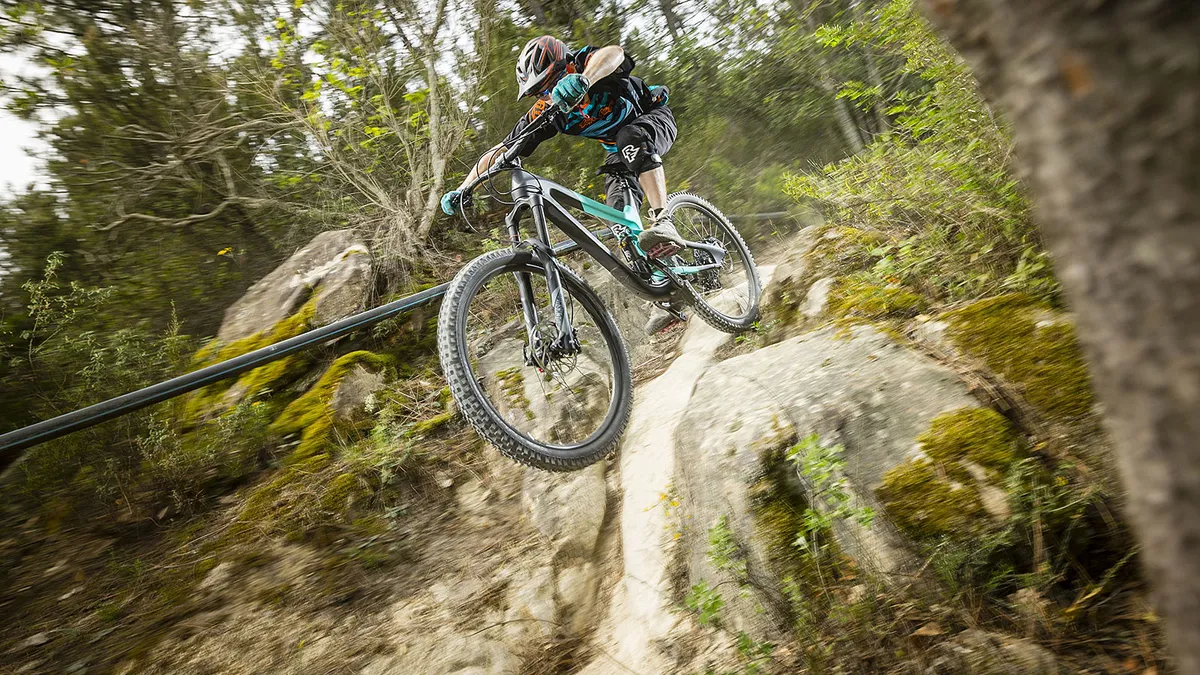
With a few spec tweaks, the Range has the potential to be a lively ride
That’s a great idea in terms of maximising protection and minimising weight, but the rear also comes with the super sticky VertStar compound while the front gets the harder TrailStar rubber mix. It means a rapidly wearing and draggy rear tyre paired with a less grippy front – the exact opposite of what’s ideal. It gave the bike some unsettling handling characteristics when pushing hard, with the front wanting to understeer and the rear holding tenaciously on, making it hard to adjust the angle of the bike using the rear brake.
It’s also a bit of a surprise that the all-up weight of the Range isn’t as low as the carbon frame would hint at, tipping the scales at 31.3lb/14.2kg. Some of that is down to that heavy duty rear rubber and the chunky shock, as the Range offers a very respectable kit list for the cash.
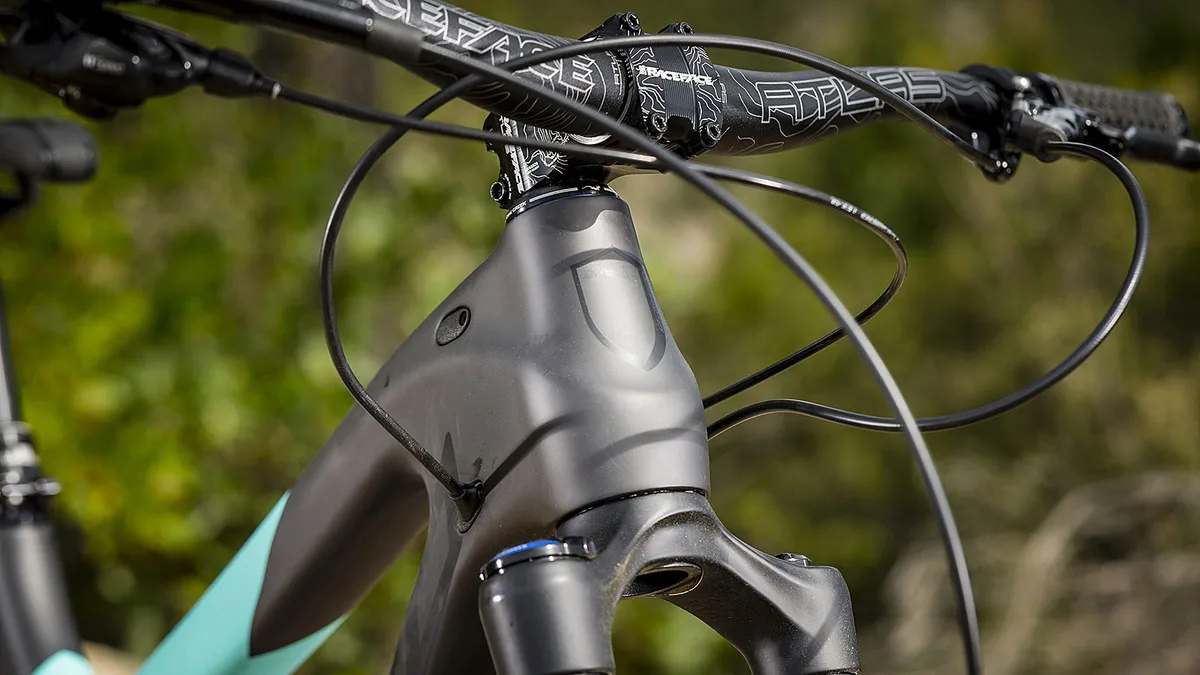
The slack 65.5-degree head angle helps keep things calm when the going gets steep
SRAM’s X1 11spd drivetrain is utterly functional and the XX1 carbon crankset with direct-mount 30t ring is a nice upgrade, with chain security and protection boosted by a E-13 guide and bashplate combo. It’s a sign of the times that a 50mm stem actually feels a touch long on a bike like this nowadays, but the 35mm-diameter RaceFace Atlas item is nicely made and the matching 800mm wide bar allows you to wrestle the front end wherever you wish.
The four-pot Guide RS stoppers offered good feel and resistance to fade though we’d rather have seen a 200mm rotor up front for descending in big terrain too.
All in all, the basic chassis and suspension design of the Range is a solid if rather conservative package. It’s got the potential to be a lively and fun bike, but as it stands it’s masked by the sluggish shock and slightly mismatched rubber.


